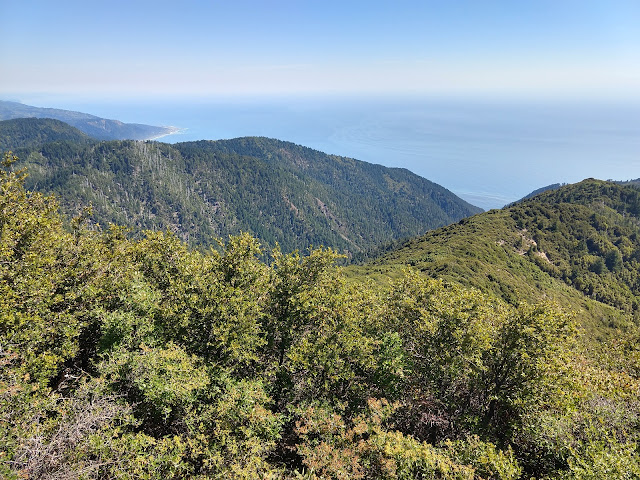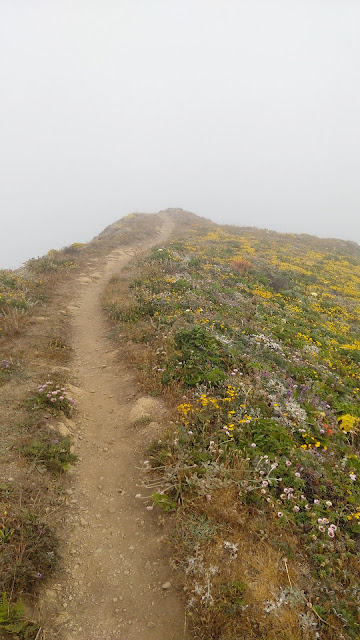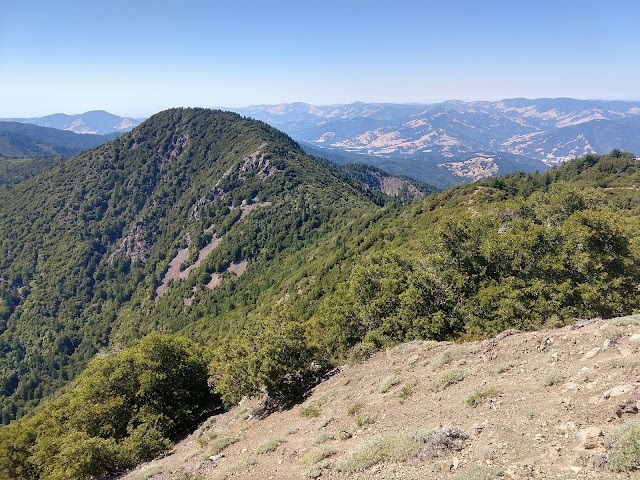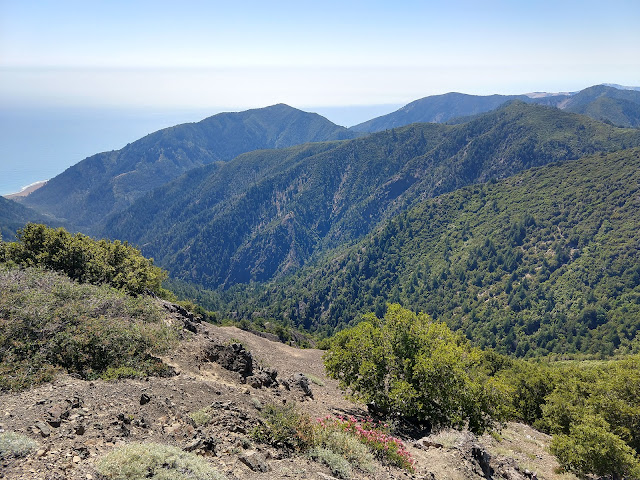A week ago I left the Dreaming Tower (near Elk, CA) and headed north to Bend, Oregon, where I’ve been staying with friends Dave and Amy for the last week.
The drive is very scenic – oak woodlands and brown hills east of Ukiah along the shores of the vast Clear Lake, which apparently has the distinction of being the oldest lake in North America as well as California’s largest freshwater lake that is fully contained within the state (looking at you, Tahoe). The route then drops down into the Sacramento Valley before heading north on the 5 through Red Bluff, Redding, and Weed, past Mount Shasta to the Oregon border. The day I make the trip is the beginning of the second major El-Niño-and-climate-change-fueled heat wave of this summer, and the heat of the Sacramento Valley is oppressive: when I stop at In-n-Out in Redding for lunch, the temperature is 100 degrees. North of Klamath Falls, the highway climbs onto the high desert plateau of south-central Oregon and then winds through ponderosa pine forest to Bend.
Since being here, I have played pickleball, floated the Deschutes River on tubes, run along Tumalo Creek, gone out for ramen, celebrated Dave’s birthday, and most recently, backpacked in the Three Sisters Wilderness.
On Friday around 6:30pm, we hike four miles north along Fall Creek through forests of Douglas Fir, Western Hemlock, and Engelmann Spruce to Green Lakes, a series of beautiful lakes situated at the base of South Sister and Broken Top peaks. The shaggy hemlocks in particular catch my eye – they seem to glow green in the dim twilight, like a mash-up between the tamaracks of the boreal forest and the firs of the western forest. I'm so stoked to be back in the alpine zone I can barely sleep!
The next morning, we pack our day packs and head up one of the drainages coming off South Sister. The hike is challenging: in contrast to many alpine areas that feature a band of grasses, mosses, and dwarf shrubs between ~10,000 and ~12,000 ft that stabilize the slope, the alpine zones of these stratovolcanoes are composed mostly of dusty, loose sands and gravels that tend to slide with each step. Still, the landscape is incredible: snow fields melting into icy streams incising channels through the loose rock. Dave is pet-sitting for one of his coworkers, so Mia the dog comes along too. We climb onto a saddle next to Lewis Glacier and a small blue cirque lake before ascending to the caldera (10,350 ft), where I do a quick lap and scope out some of the surrounding peaks: to the north are Middle and North Sister, Mt. Washington, Mt. Jefferson, and Mt. Hood, and to the south are Broken Top and Mt. Bachelor. We slowly descend South Sister to Green Lakes, submerge in the stream for a little relief from the intense afternoon heat, and then get into some freeze-dried meals: vegan orzo bolognese and pasta primavera (supplemented with tuna packet).
The next morning, we hike up the drainage to the east onto a narrow ridgeline that leads up to the summit of Broken Top, a jagged and sinister volcano whose glacier-scoured walls reveal a long history of uplift and erosion, eruption and deposition. Aside from a couple spots where I "portaged" her up large boulders, Mia leads the charge. At the very top, I ascend one of the steep spires that crown the caldera and get my daily dose of fear.
Reflecting on my time in central Oregon, I can’t help but notice that I am not as obsessed with this area as some other beautiful places I have visited in recent years. I guess I’m old and experienced enough to know what I like. While getting into the alpine zone this weekend was an incredible experience and a nice break from the heat of Bend, the arid climate of Oregon’s high desert (similar to the climate of Denver and Boulder) is just not all that appealing to me. In the same way that leaving the snowy mountains in Colorado for the hot and dry plains of the Front Range urban corridor always made me a little sad, Bend is just too far from the moisture, the coast, the coolness, the fog, the exciting weather for me. Not to mention it has filled with wildfire smoke a couple times since I have been here. In other words, I don’t get the appeal of living in a rain shadow, in a tinderbox. Western North America is generally very hot and dry, but full of all sorts of havens from the heat: steep canyons that block the sun for much of the day, wet coastlines buffered by the cool Pacific, high peaks that intercept snow and rain. These isolated patches of the “north woods” scattered throughout the west are the only places for me. I prefer gritty mountain towns with their general stores and post offices and fire stations over ritzy, suburban, mountain-adjacent towns with their breweries and strip malls. Of course, I am primarily here to visit Dave and Amy, and that has been wonderful.
Most of the following photos are from our trip to the Three Sisters Wilderness this past weekend, but at the end I have included a few photos of coastal wildflowers from the tail end of my Mendocino Coast adventure to compare with the alpine wildflowers of this past weekend.
Three Sisters Wilderness – Central Oregon:
Navarro Point - Northern California:
























































